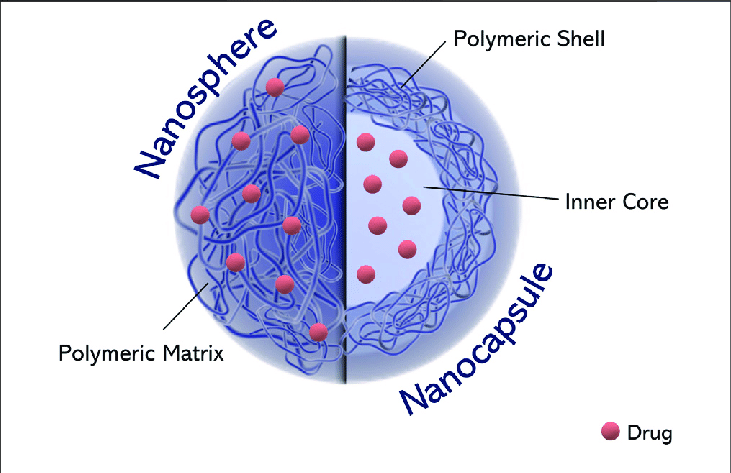Polymeric Nanoparticles: Versatile Carriers for Drug Delivery and Beyond
What are Polymeric Nanoparticles?
Polymeric nanoparticles are nanoscale particles composed of natural or synthetic polymers, typically ranging in size from 10 to 1000 nanometers. These nanoparticles have gained significant attention due to their versatility, biocompatibility, and ability to encapsulate and deliver various active ingredients, such as drugs, proteins, and nucleic acids.

Composition and Synthesis
Polymeric nanoparticles can be prepared from a wide range of natural and synthetic polymers, such as:
- Natural polymers: chitosan, alginate, gelatin, albumin
- Synthetic polymers: poly(lactic acid) (PLA), poly(lactic-co-glycolic acid) (PLGA), poly(ε-caprolactone) (PCL), poly(ethylene glycol) (PEG)
These polymers are chosen based on their biocompatibility, biodegradability, and ability to control the release of encapsulated substances. The synthesis of polymeric nanoparticles involves various techniques, such as:
- Nanoprecipitation: A simple and widely used method where the polymer is dissolved in an organic solvent and then added to an aqueous solution, causing the polymer to precipitate and form nanoparticles.
- Emulsion-solvent evaporation: This method involves the formation of an emulsion between an organic solvent containing the polymer and an aqueous phase, followed by the evaporation of the solvent to form nanoparticles.
- Ionic gelation: Particularly suitable for natural polymers like chitosan, this method involves the crosslinking of polymers with oppositely charged ions to form nanoparticles.
Advantages of Polymeric Nanoparticles
Polymeric nanoparticles offer several advantages over conventional drug delivery systems:
- Controlled and sustained release: The polymer matrix can be designed to control the release kinetics of encapsulated substances, enabling sustained delivery over an extended period.
- Enhanced stability: Encapsulation within the polymer matrix protects sensitive compounds from degradation, increasing their stability and shelf life.
- Improved bioavailability: Nanoparticles can enhance the solubility and permeability of poorly water-soluble drugs, improving their bioavailability and therapeutic efficacy.
- Targeted delivery: The surface of polymeric nanoparticles can be functionalized with targeting ligands, such as antibodies or peptides, to achieve site-specific delivery and minimize off-target effects.
Applications of Polymeric Nanoparticles
Polymeric nanoparticles have found numerous applications in various fields, including:
Drug Delivery
Polymeric nanoparticles are extensively used as drug delivery vehicles for various therapeutic agents, such as small molecule drugs, proteins, and nucleic acids. They enable targeted delivery to specific tissues or cells, improve drug solubility and stability, and provide controlled release profiles. Polymeric nanoparticles have been investigated for the treatment of cancer, infectious diseases, and neurodegenerative disorders, among others.
Gene Delivery
Polymeric nanoparticles can also be used as non-viral vectors for gene delivery. Cationic polymers, such as polyethylenimine (PEI) and poly(L-lysine) (PLL), can complex with negatively charged nucleic acids to form stable nanoparticles. These nanoparticles protect the genetic material from degradation and facilitate cellular uptake and intracellular release, enabling efficient gene expression or silencing.
Imaging and Diagnostics
Polymeric nanoparticles can be loaded with imaging agents, such as fluorescent dyes or magnetic nanoparticles, for use in diagnostic applications. These nanoparticles can enhance the sensitivity and specificity of imaging techniques, allowing for early detection of diseases and real-time monitoring of therapeutic responses.
Tissue Engineering and Regenerative Medicine
Polymeric nanoparticles can be incorporated into scaffolds or hydrogels for tissue engineering and regenerative medicine applications. They can deliver growth factors, cytokines, or small molecule drugs to promote cell proliferation, differentiation, and tissue regeneration. Additionally, nanoparticles can be designed to respond to specific stimuli, such as pH or temperature changes, enabling controlled release of bioactive molecules.
Challenges and Future Perspectives
Despite the promising potential of polymeric nanoparticles, several challenges need to be addressed for their successful translation into clinical applications. These include:
- Scale-up and manufacturing: Developing robust and reproducible methods for large-scale production of polymeric nanoparticles with consistent quality and properties.
- Biocompatibility and safety: Ensuring the long-term safety and biocompatibility of polymeric nanoparticles, particularly for chronic administration.
- Regulatory considerations: Navigating the regulatory landscape for the approval of nanoparticle-based therapies, which may require additional safety and efficacy studies.
Future research in polymeric nanoparticles will focus on the development of advanced polymeric materials with improved biocompatibility, stimuli-responsiveness, and multifunctionality. The combination of polymeric nanoparticles with other nanomaterials, such as inorganic nanoparticles or carbon nanomaterials, will enable the creation of hybrid nanoparticles with unique properties and functions. Additionally, the integration of polymeric nanoparticles with emerging technologies, such as 3D printing and microfluidics, will open up new opportunities for personalized medicine and on-demand manufacturing of nanoparticle-based therapies.
Further Reading
Nanomaterials, Polymeric nanoparticles for drug delivery
Frontiers in Bioengineering and Biotechnology, Polymeric nanoparticles – Promising carriers for cancer therapy
